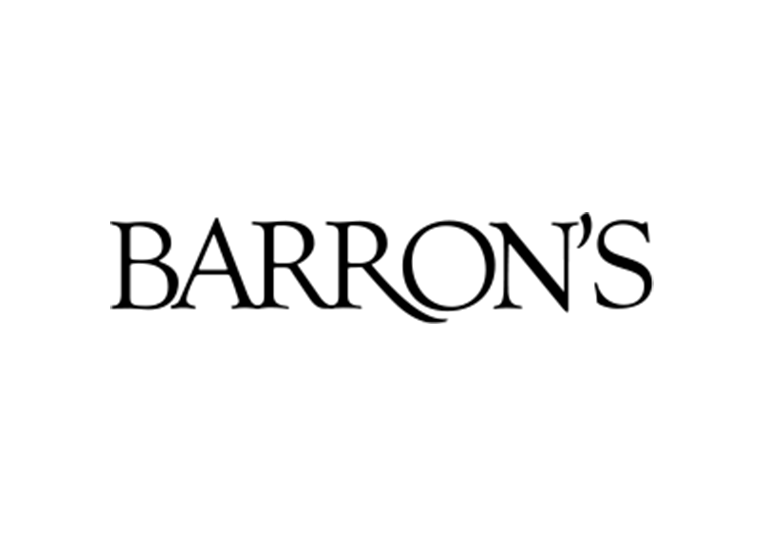After launch of ChatGPT, swift reappraisal by investors
Generative artificial intelligence like OpenAI’s ChatGPT, not only generates text, images and code, but it also has the power to transform company valuations — rapidly, dramatically and in ways both predictable and surprising.

Nvidia, maker of chips to power AI, gained 150% since ChatGPT’s release on Nov. 30, 2022. Meta, Facebook’s parent, came out of its long slump and rose 142%. Other big tech companies like Microsoft, Amazon and Apple gained, too. Even Google’s parent Alphabet, initially considered a potential loser from the spread of generative AI, joined the party, as did Tesla. Combined, these huge market-cap stocks have pulled the overall market up against strong economic headwinds.
Opt In to the Review Monthly Email Update.
In a working paper, UCLA Anderson’s Andrea L. Eisfeldt and Gregor Schubert and USC’s Miao Ben Zhang establish a measure of generative AI exposure across industries and firms, based on the mix of occupations held by each firm’s workforce, and then measured firm-level market reaction since the launch of ChapGPT. Portfolios based on their work outperformed by 9% in the initial four months following the ChatGPT debut.
The researchers suggest that ChatGPT has had a large, positive effect on the firms most exposed to generative AI and that firms with the highest generative A. exposure scores outperform those with the lowest scores with an excess return of more than 0.4% per day in the two weeks following ChatGPT’s release.
Who Is at Risk?
The researchers propose that firms that score higher for exposure to generative AI are able to use AI to help their employees accomplish tasks faster. This allows them to save on costs and increase their free cash flow.
One surprising finding was that the jobs most impacted are not the routine, monotonous tasks that past innovations in information technology affected, but those performing nonroutine, mentally challenging tasks. Examples are analyzing problems, recognizing patterns and drawing inferences, comprehending text, etc. As expected, jobs involving manual labor are the least impacted while tasks requiring communication between people fall somewhere in the middle. The table below shows the researchers’ calculated exposure scores for jobs with the highest and lowest exposures to generative AI.
In terms of industry sectors, the table below shows those most and least exposed to generative AI.
The researchers found that, in general, jobs with higher salaries are more exposed to AI.
As a result, some larger firms are seeing the ranks of workers dwindle. On May 2, 2023, IBM announced it would stop hiring for 7,800 back-office roles that could be replaced by AI. This represents 30% of IBM’s back-office jobs.
Schubert, from the research team, believes that such announcements will be an ongoing trend in the future. “A large impact will be on freelancing via platforms and international business service outsourcing, so the employment impact at big U.S. companies might be muted in the beginning,” Schubert suggests in an email exchange. He believes much of this will take place in the form of slower employment growth in some occupations, as firms simply stop replacing employees as they leave, rather than firing existing employees — but there is also a potential for accelerated employment growth in occupations that complement the new technologies.
Given this news, perhaps it makes sense that IBM ranked as the firm most exposed to generative AI when the researchers calculated exposure scores for each firm listed on the New York Stock Exchange. Below are the 15 firms with the highest exposure scores and the 15 with the lowest scores.
Using ChatGPT to Research ChatGPT
Deriving the generative AI exposure scores began with a monstrous data task made a bit simpler by employing ChatGPT to do some of the work. The O*NET database, which lists jobs by their standard occupational classification as assigned by the U.S. Bureau of Labor Statistics, was the first stop for data. Job titles in the database are broken down by the tasks performed by that occupation. The researchers used ChatGPT to label these job tasks. The labels indicated whether ChatGPT or a future version of the software would be able to perform the tasks. With these labels, a final score for a job’s exposure to generative AI was produced based on the number of its tasks that could be handled by ChatGPT.
The next step was to add firm-level and industry-level exposure scores using the job-level scores just calculated. For this, the researchers turned to Revelio Labs, which gathers data from employee profiles on LinkedIn and through other resources. This information enabled the researchers to see all of the job titles that make up the workforce at a particular firm. They gathered this data for each firm listed on the NYSE. Once they had the breakdown of jobs at a particular firm, they were able to map the job-level scores they previously calculated to those jobs and develop a score for the entire firm. The data was rolled up one more level by using the firm scores to also calculate industry-level scores.
The measure of firm-level generative AI exposure captures the relative degree to which tasks in a firm can be made more productive by advances in large language models. The researchers believe they are the first to develop such a measure with a focus on firms.
Eisfeldt, Schubert and Zhang tested their measures of firm AI exposure by examining 2023 earnings call transcripts. They contend they found a strong relationship between firms with high exposure scores and those discussing the topic of AI more frequently. In fact, they suggest that a 10 percentage point increase in generative AI exposure is associated with a 7.6 percentage point increase in the likelihood of mentioning the generative AI topic. This positive relationship held even when IT-related firms were removed from the data.
Buy the Winners, Short the Losers
With the generative AI exposure scores in place, the researchers sought to document the changes in valuation for firms after ChatGPT was released using daily stock returns from Nov. 15, 2022, to March 31, 2023.
Firms were sorted in order of their generative AI exposure and then broken into five equal value-weighted groups, or quintiles. The researchers looked at the performance of each quintile but were especially interested in the quintiles holding the firms with the highest and lowest exposures.
A portfolio called “Artificial Minus Human” was created by buying the firms in the quintile with the highest exposure and selling short (making a bet they will go lower) the firms in the lowest exposure quintile, after adjusting each portfolio’s returns for its sensitivity to overall market returns. The returns of the AMH portfolio represented the difference in returns between the firms with the highest and lowest AI exposures. This portfolio had a 9.4% return from ChatGPT’s release to March 31, 2023.
Similarly, within-industry and industry-neutral portfolios were created. All firms were grouped by their respective industries, then sorted by AI exposure scores and grouped into five equal value-weighted quintiles within each industry. Next, the returns of the quintiles of the within-industry portfolios were market-capitalization-weighted and averaged across the industries to form the industry-neutral portfolios. This created portfolios that were useful for seeing the difference in AI’s impact on firms with high or low exposure levels relative to other firms in the same industry. Below, the industry-neutral portfolios and the AMH portfolio excess returns are shown for the two weeks following ChatGPT’s debut and over the Nov. 15, 2022, to March 31, 2023, period.
There were some sizable differences in performance even in these “industry-neutral” portfolios. The high exposure quintiles had excess returns up to more than 0.4% per day and the lowest exposure quintiles had excess returns as low as -0.25% per day. These differences illustrate that AI can have quite a difference in impact on firm valuations given the makeup of their workforce.
The ChatGPT announcement was a major shock, the researchers believe. Then reaction cooled. And more recently, as seen in the stock chart atop this article, investors again bid up company shares based on AI exposure.
Some Highly Exposed Companies Could be in Trouble
Within some industries, firms highly exposed to AI significantly outperform the returns of firms with low exposure to AI. These industries include:
- finance,
- manufacturing,
- administrative support and
- waste management
On the other hand, in the real estate, rental and leasing industries, highly exposed firms significantly underperform firms with lower exposures. This negative effect suggests that incumbent firms could be displaced by new entrants using generative AI.
What Might Dull the Impact of Generative AI?
Previous technology advances, such as the personal computer and the internet, held out the hope of big productivity leaps and then disappointed. Eisfeldt, Schubert and Zhang note that events could transpire that would change the course, or hamper the progress, of valuations of firms highly exposed to generative AI. Fears about the potential creation of artificial general intelligence or privacy laws could cause government regulation that would halt or slow the productivity potential of AI.
Additionally, there’s the fact that generative AI models sometimes produce nonfactual statements, and firms will likely need to keep humans in the loop to control its outputs. This will dilute some of the cost savings from employing AI. And in the short run, companies might also need to spend on retooling and infrastructure in order to employ AI. This too may limit near-term gains for these firms.
Featured Faculty
-
Andrea L. Eisfeldt
Laurence D. and Lori W. Fink Endowed Chair in Finance and Professor of Finance
-
Gregor Schubert
Assistant Professor of Finance
About the Research
Eisfeldt, A. L., Schubert, G., & Zhang, M. B. (2023). Generative AI and Firm Values. Available at SSRN.








